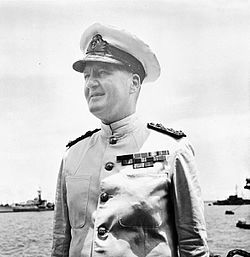
Operation Tungsten was a Second World War air raid conducted by the Royal Navy that targeted the German battleship Tirpitz at her base in Kaafjord in the far north of Norway on 3 April 1944.
Contents
- Home Fleet forces dispatched
- Force One
- Force Two
- Composition of strike forces
- Footnotes
- Bibliography
The damage inflicted during the attack was not sufficient to sink or disable the ship, but she suffered considerable damage to her superstructure and unarmored areas, with 122 members of her crew killed and 316 were wounded. Tirpitz was eventually disabled and then sunk by Royal Air Force heavy bombers later in the year.




